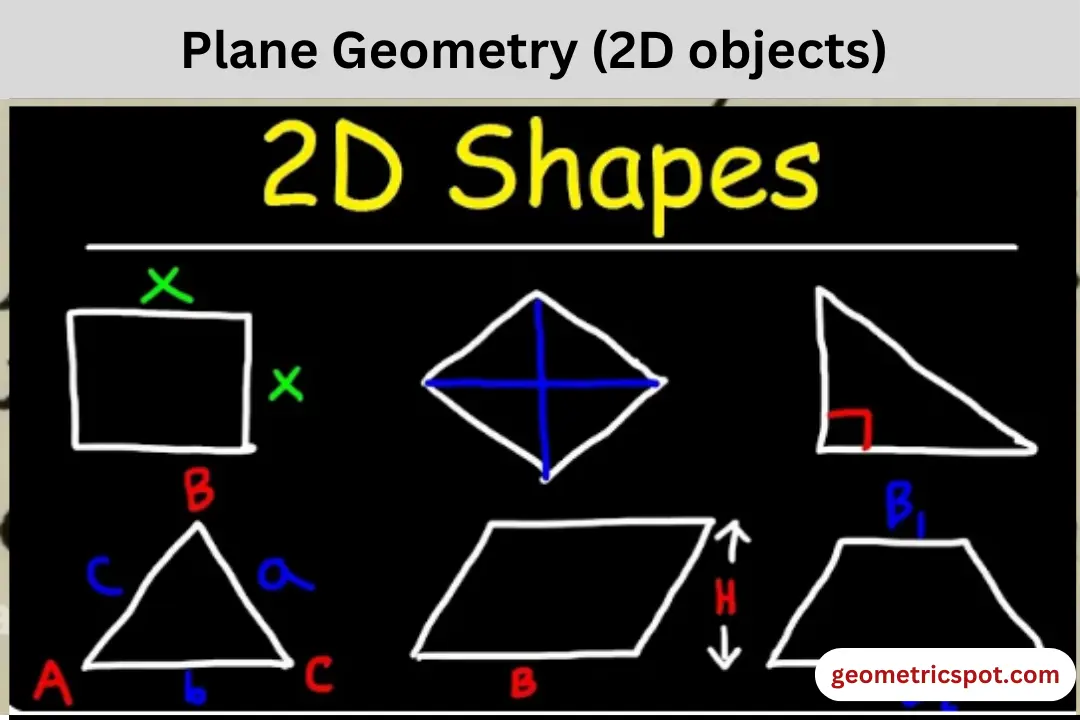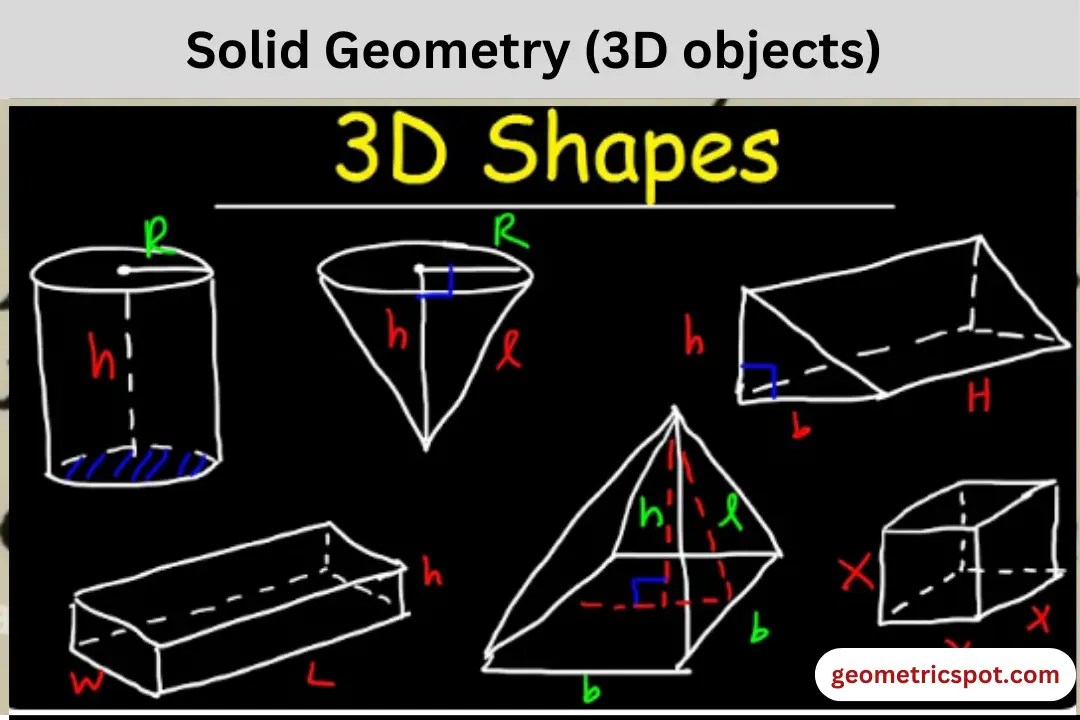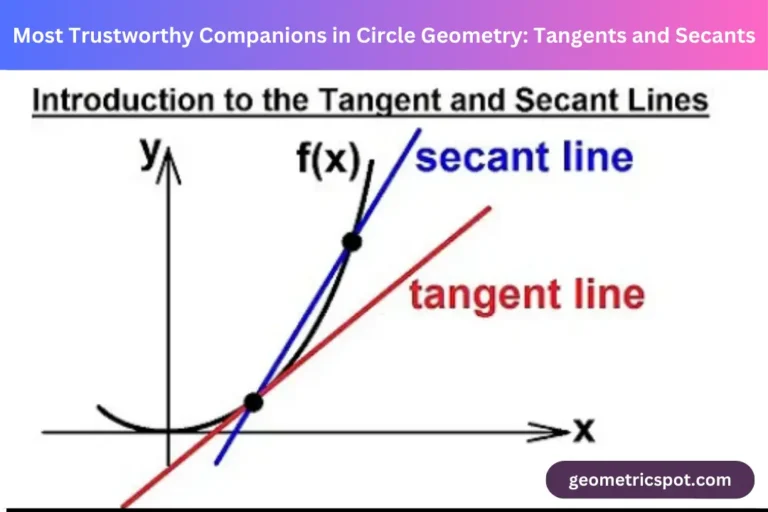Plane Geometry Vs Solid Geometry | 2D, 3D Objects & Formulas/ Theorem
Have you ever thought about how to build a study rack or design a cool ramp? We can draw, design and construct things with the help of geometry. Plane geometry Vs Solid Geometry are two basic concepts of mathematics.
It’s everywhere. Geometry is defined as: A branch of science that belongs to mathematics and deals with shapes, dimensions, angles and sizes of everything we see, feel and observe. Geometry deals with two-dimensional shapes and three-dimensional shapes. In simple words, mathematics is all about plane geometry Vs solid geometry.
In Euclidean geometry, we categorize these two types as plane and solid geometry. Plane Geometry refers to 2D shapes such as triangles, rectangles, squares, circles, flat diagrams and things that can be drawn on a paper.
On the other hand, solid geometry refers to the study and implementation of 3D shapes like cubes, cuboids, cones, pyramids, balls of the globe and many more. This concept of Plane Geometry Vs Solid Geometry | 2D, 3D Objects & Formulas/ Theorem helps us to understand the basic differences between shapes in our daily life.
Plane Geometry (2D objects)

Welcome to the world of flatness! Plane Geometry is all about flat shapes, figures, pictures like squares, circles, rectangles and triangles. In simple words, plane geometry is the combination of flat shapes that can be drawn on paper or anything.
Every two-dimensional diagram can only be defined by length and width. Sometimes it only relies on the radius of the circle. Don’t worry about height, volume and depth in plane geometry because everything is nice and flat.
Formulas/ Theorem
- Area/perimeter of circle
- Area/perimeter of square
- Area of triangle
- Pythagoras theorem
Parts/ Elements of Plane Geometry
Some important parts that can help to draw and identify 2D objects are:
- Line – A straight line without any curviness on a plane paper. It is an infinite structure that is made by joining infinite points together. There are two types of lines: Vertical line and Horizontal line in geometry. Lines have a diverse concept. If a straight line has both starting and ending points then we call it a line segment. If a line has a starting point but no ending point, it is called a ray.
- Point – It’s a dot or a location on a plane paper. Point is beyond the dimensions because it has only one position.
- Angles – Plane Geometry refers to the angles that are made by the combination of two rays. We usually call them sides that carry a common endpoint. This common endpoint is called the vertex of the angle.
- Polygons – A 2D shape or object that is made by finite straight line segments in a closed loop is called a polygon.
- Circles – A simple flat closed round like structure is called a shape. All points of the circle have the same consistent distance from each other.
Solid Geometry (3D objects)

Welcome to the world of reality! The solids. Solid Geometry is all about cubes, cuboids, pyramids, cylinders, cones, spheres and many more things. In other words, we can say any object that has 3 dimensions and can be touchable physically. Three-dimensional objects or solid geometry can be measured by length, width and height.
The main difference between plane and solid geometry is: plane geometry is all about length and width but in solid geometry, we deal with volume, height, depth, and height. In simple words, we can say that 3D objects are made from the rotation of 2D shapes.
Formulas/Theorems
- Volume
- Surface area
- Diagonal
- Total surface
- Height
Parts/ Elements Of Solid Geometry
Some of the important parts that belongs to solid geometry:
- Faces – We all are familiar with the fact that every geometric shape is made by a flat or curved surface called faces.
- Edges – Edges usually defined as: A line segment on the boundary that helps to meet one vertex to the other. In simple words, it joins the boundary or corner points to each other. Another definition is: Faces that connect in a straight line are called edges or a line where two faces meet with each other.
- Vertices – Vertices refers to the point where edges of any object meet or join with each other. In simple words, it is a point where two or more than two line segments meet each other.
Common Connection Between plane and solid geometry is:
Mostly 3D objects can be made by combining many flat or plane shapes. For example; a cube is made of 6 squares.
Real world Applications of Solid and plane geometry
- Architects and engineers use plane geometry to draw their structure and implement solid geometry to turn it into reality.
- Video game developers use 3D objects and 3D geometric laws to create virtual worlds. 3D video games and rides are examples of this.
- Artists create their arts with creativity by using the rules of geometry. Portraits, mannequins or arts and crafts objects are examples of this.
Conclusion
Geometry derived from a Greek word geo means “earth” and metria means “measure”. Understanding solid and plane geometry not only helps us to learn mathematics but it also changes our visions and perspectives to observe the world. Plane Geometry Vs Solid Geometry | 2D, 3D Objects & Formulas/ Theorem helps us to understand the structure of things. Plane geometry is the foundation of the real world like area, perimeter and theorems. On the other hand, solid geometry converts these plane and flat images into real world objects. 2D blueprints are used to create the 3D structures. Unlock your potential by reading this theoretical article about plane geometry Vs solid geometry.
Frequently asked questions
What is the exact meaning of plane Vs solid geometry?
Plane means two-dimensional objects drawn on a flat surface such as black board or paper. We can measure their length and width. While solid means three-dimensional objects that are made by 2D objects such as box, cones and cuboids. We can measure their length, width, height and depth.
Give some examples of plane and solid objects?
Plane objects – the basic shapes such as circles, triangles, squares, rectangles, stars, and diamonds. Shapes that can be drawn on any blank piece of paper.
Solid Objects – the basic plane shapes rotated to convert real world objects such as pyramids, cubes, cones, spheres, and wheels.
What is the basic concept of geometry and types of geometry?
The basic geometry refers to the points, lines, planes, faces, edges, vertices and angles that can be explained in coordinate geometry.
Cento Magazine is a beacon of creativity and culture. It offers readers a unique perspective on art, literature, and lifestyle. Each issue brings fresh, thought-provoking content. Let’s explore what makes Cento Magazine special.





